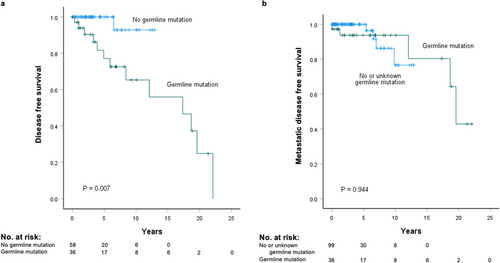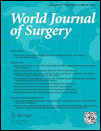Genotype–Phenotype Correlations and Clinical Outcomes in 155 Cases of Pheochromocytoma and Paraganglioma
Copyright comment: Springer Nature or its licensor (e.g. a society or other partner) holds exclusive rights to this article under a publishing agreement with the author(s) or other rightsholder(s); author self-archiving of the accepted manuscript version of this article is solely governed by the terms of such publishing agreement and applicable law.
Abstract
Background
Pheochromocytoma and paraganglioma (PPGL) are rare neuroendocrine tumours, often associated with germline mutations that influence the disease biology and clinical course. We aimed to describe the genotypic and phenotypic characteristics of a consecutive series of PPGL patients and correlate mutation status with clinical outcomes.
Methods
We performed a retrospective cohort study of all PPGL patients who presented to a tertiary referral centre between March 2005 and February 2022. Genotypic, phenotypic and follow-up data were analysed.
Results
A total of 140 patients were included. Of these, 94 (67%) patients underwent genetic testing and a mutation was detected in 36 (38%) patients. Mutation presence was associated with younger age, smaller tumour size and bilateral adrenal tumours. Disease recurrence occurred at a median time of 5.4 (IQR 2.8–11.0) years after treatment in 21 (15%) patients, of which 14 (67%) had a mutation in a susceptibility gene. Recurrence pattern was influenced by mutation type; higher local recurrence risk for SDHA, SDHB, and MEN2B disease, and higher metastatic risk for SDHB, VHL and MEN2A disease. Recurrence occurred in three (3%) patients with mutation absence. Multivariate analysis revealed that age ≤40 years and mutation presence were associated with increased risk of disease recurrence.
Conclusions
Genotypic characteristics strongly influence disease presentation and recurrence risk, which may occur more than 5 years after initial treatment. Routine genetic testing of PPGL patients is warranted given the high prevalence of mutations, allowing for prognostication and tailored follow-up. In the presence of germline mutations, follow-up should be life-long.





